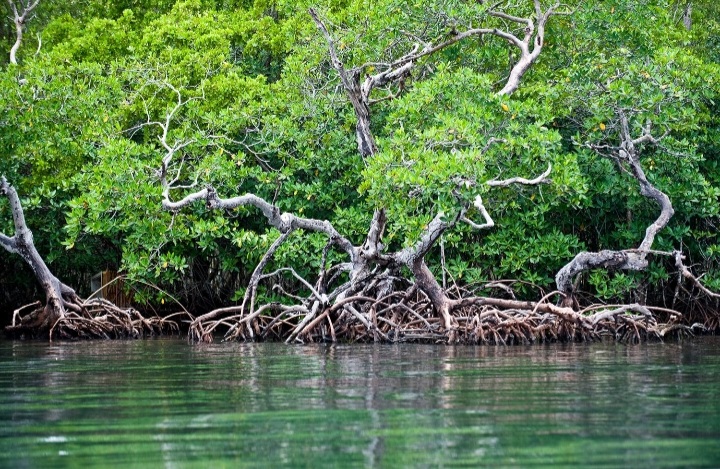Mangrove forest only sustainable when conservation zones are respected

By Femi Akinola and Faridat Salifu
Mangroves are recognised globally for their impressive carbon storage potential and plethora of social and ecological benefits.
Beyond their outsize role in buffering the world against greenhouse gas emission, their extensive root systems protects and stabilize coastlines and provide habitat for commercially important fish and fish shellfish.
Mangrove timber has sustained local livelihoods for generations. However, these crucial coastal tropical forests also have a long history of exploitation.
Consequently, the United Nations Educational, Scientific and Cultural Organisatios (UNESCO) declared every July 26th as International Day for the Conservation of the Mangrove Ecosystem.
In 2015, during the General Conference of UNESCO, the observance was officially designated, and the first celebration took place in July 2016.
This day serves as a globl reminder of the importance and critical role of Mangrove Ecosystems in managing environmental health and sustainability.
Mangroves are remarkable coastal forests found in the tropical and subtropical regions of the world, where land meets the sea. They are known for their rich biodiversity, providing habitat to a wide array of wildlife, including fish, birds, and other marine creatures.
The intricate root system of mangrove trees are not only essential for creating a robust ecosystem but also help stablize coastal environments.
In addition to its ecological benefits, mangrove play a vital role in climate regulation. It protect shorelines from storm surges and erosion, shiels costal communities from harsh impacts of climate change and rising sea levels.
Mangrove soils serve as effective carbon sinks, sequestering significant amounts of carbon-dioxide from the atmosphere. This ability to trap carbon makes mangroves crucial in the fight aginst global warming, highlighting their importance in enviromental conservation efforts.
In spite of its significance, mangrove ecosystems are under threat worldwide. UNESCO reports that some countries have experienced up to 40% loss of their mangrove coverage between 1980 and 2025. This decline is often driven by human activities such as human development, agriculture and pollution.
For these reasons, on this particular International Day for the Conservation of the Mangrove Ecosystem, people are to be concerned more about the need for restoration actions and protective measures to ensure recognition and protection of importance of the mangrove around the world to ensure its survival and regeneration.
This International Day for the Conservation of the Mangrove Ecosystem should be marked with education campaigns aimed at encouraging individuals to engage with the mangrove conservation support at schools, organizations, workshops and discussions at the local communities. towards restoring and protecting mangrove ecosystem.
The need to preserve mangoves and the ecosystem services they sustain, while also providing for the social and economic needs of the people who depend on them, is one of the coastal conservation’s greatest conundrums. Mangove forest only sustainable when conservation zones are respected.
